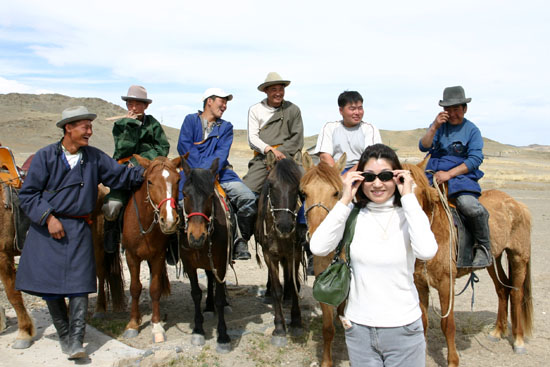
Mongolia
The People

Everyone is quick to notice the physical similarities between Japanese and Mongolians.
DNA research has recently confirmed that Mongolians, Tibetans, Bhutanese, Japanese
and North American Indians came from the same ancestors, who probably lived in
Siberia ten or twenty thousand years ago. Mieko was often mistaken for a
Mongolian. I did not have this problem, but was once asked if I was
Russian. Mieko is shown here with a few of her cousins, three
hundred generations removed.
Mongolian Hero
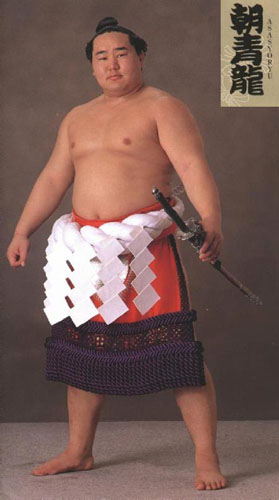
Asashoryu, who is Mongolian, is the reigning grand champion of Japanese sumo.
In Mongolia only Genghis Khan is more famous than Asashoryu. Although the
population of Mongolia is only 2% that of Japan, 20% of the sumo wrestlers
are from Mongolia. This has led some Japanese to comment that the
Japanese youth of today are getting soft.
Other Heroes
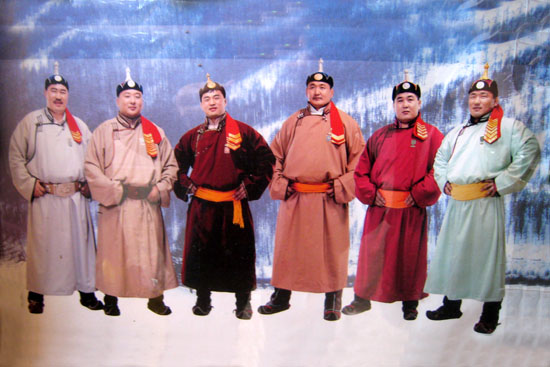
These are the champions of Mongolian Wrestling.
Nomad Girl
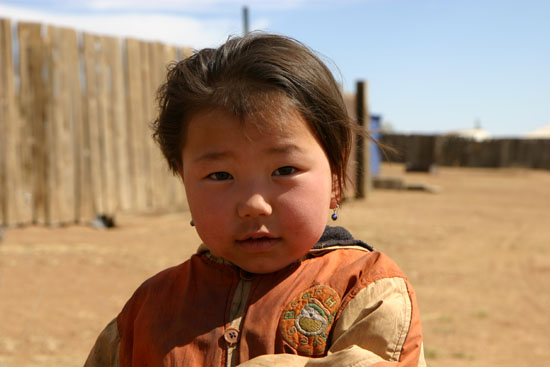
The kids are always happy to smile for the camera.
University of Michigan Fan
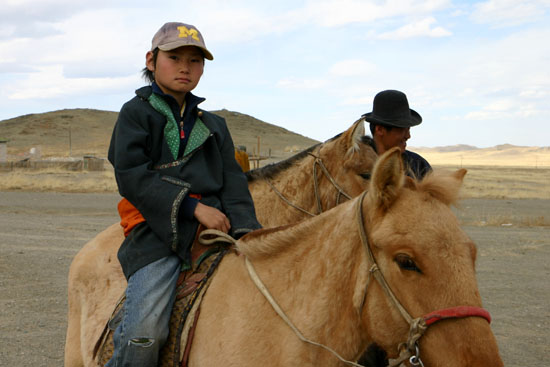
This boy's faded cap identifies him as a Wolverine fan.
Easy Rider
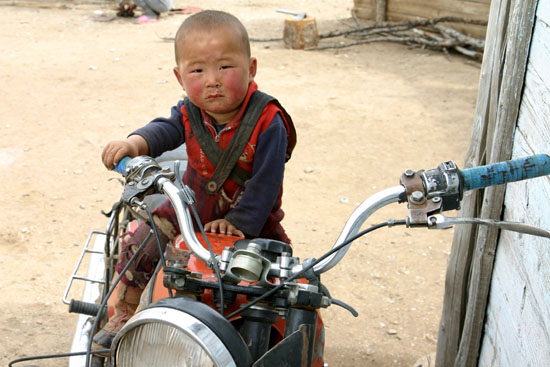
This little guy found a toy in his father's motorcycle.
Communications
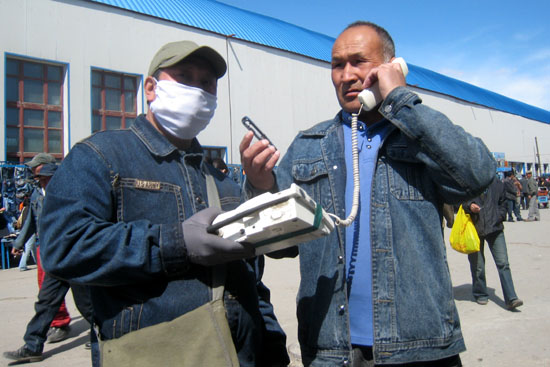
There are few land based telephones and almost no public phones in the country.
A large number of people make a business out of selling phone time on their
portable phones.
Traditional Game
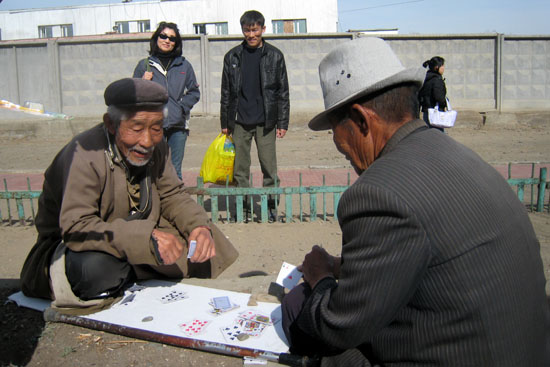
These two in Ulan Bator are playing a card game on the street.
New Age Games
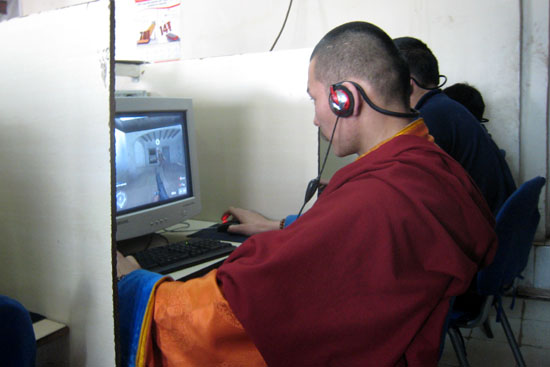
This monk took a break from meditation to play a game at the local internet center.
Visit to the Capital
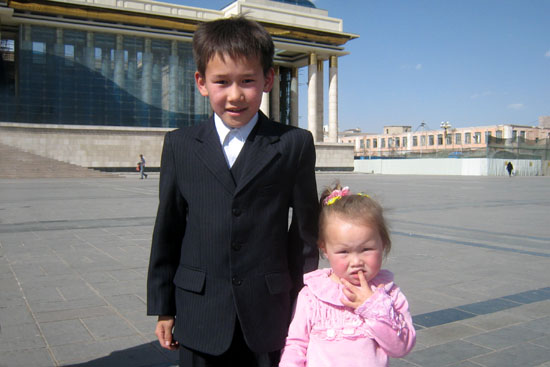
I got this picture of this guy and his little sister in front of the parliament building.
School Excursion
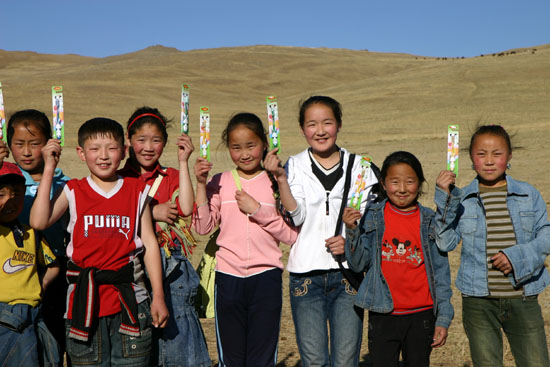
These junior high school children, who were on school excursion, posed for a picture with
toothbrushes that I gave them.
Mongolian Dental School
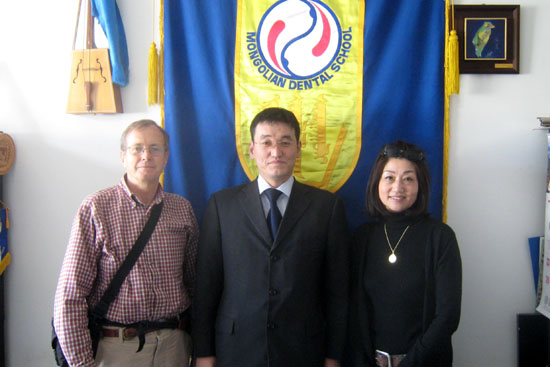
We are with Dean Bazar Amarsaikhan of the dental school in Ulan Bator. He speaks
Mongolian, Spanish, Russian, English and Japanese, and received a PhD in Dentistry
from the Tokyo Medical and Dental University.
Thirteenth Century Mongolian
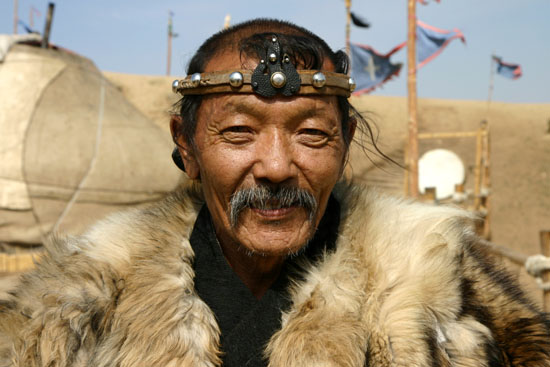
This man is dressed up as a chieftain in the reconstructed thirteenth century Mongolian
village outside Ulan Bator.